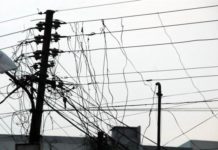By Basil Dogra
In early December of 2019, PM Imran Khan launched the “Digital Pakistan Vision” with the aim of “unleashing the full potential of youth and women in Pakistan.” Tania Adrus, a senior Google executive who quit her job to lead this initiative, outlined five pillars, which will enable the digital revolution and put Pakistan on the track to progress. However, the challenges to a truly digital revolution are humongous and require a serious commitment on part of the political and bureaucratic elite.
Although the Oxford Internet Institute’s Online Labor Index ranks Pakistan as the third-largest provider of online freelance services, Information Technology in Pakistan still lags far behind many countries. Portulans Institute’s Network Readiness Index– regarded as the most authoritative and comprehensive assessment of a country’s ability to exploit ICT (Information Communication Technology) – ranked Pakistan at 104th place among 121 other countries. This provides a hint of how far Pakistan will have to go before it can begin to call itself ‘digital.’
Since the 1990s, the human race has entered the age of information technology and some of the largest corporations and richest entrepreneurs have come from this sector. If Pakistan is to become a major economic power then it must rapidly computerize its economy, otherwise, it may not be able to keep pace with a rapidly changing world that soon plans to enter the era of Artificial Intelligence.
The challenges confronting Pakistan’s IT sectors and thus its journey towards cybernation are twofold. First, there are general challenges, which confront necessarily all industries and the economy. This mainly includes the unconducive business environment characterized by high political instability, inefficient and cumbersome bureaucracy, a culture of rent-seeking, severe infrastructural gaps, and a poor quality of university graduates.
Second, there are challenges specific to the IT sector and the process computerization of Pakistan’s economy, which I will discuss in more detail. To understand these, we need to look no further than the Network Readiness Index (NRI)’s evaluation criteria. This criterion consists of four pillars and Pakistan performs poorly on each of these.
Pakistan’s worst performance is on the “People” pillar, which is concerned with the extent to which the individuals, businesses and the government have access, resources, and skills to deploy modern information technology. The major problem underlying the individuals’ use of technology include the small number of mobile-broadband and internet users, low tertiary enrollment, and poor adult literacy. In fact, according to United Nations International Telecommunication Union (ITU)’s 2017 data, Pakistan’s mobile cellular subscription rate stands at 71%, which means that 29% of the population is still not connected to a cellular network. As for the computerization of businesses and the government, the progress has been slow due to inadequate digital literacy leading to a lack of general interest, and the shortage of substantial resources.
The NRI’s second pillar is “Technology,” which is about the level of ICT in a country in terms of the type of digital technology that is produced, the reliability and affordability of the communication infrastructure, and the readiness to embrace technologies like Artificial Intelligence and Internet of Things.
Regrettably, Pakistan’s performance on this pillar is not so promising. For starters, the communication infrastructure still needs substantial investment and is far from reliable. The performance is particularly low on measures like the cost of cheapest internet-enabled device, international internet bandwidth, mobile-broadband subscription rate and percentage of households with internet access. Moreover, the IT industry still lacks the ability to develop sophisticated software, and the aptitude to develop modern technological hardware is nonexistent. This is apparent from the poor performance of the country on indicators like robot density and investment in emerging technologies.
The third pillar of NRI is “Impact,” which looks into the impact of ‘network economy’ on social, economic and human indicators. To assess this, the indicators, such as Quality of Life, Tech Economy, and progress on Sustainable Development Goals, are considered. Sadly, the progress of Pakistan on these indicators is far from satisfactory.
Finally, NRI looks at the “Governance” pillar that is concerned with the regulatory environment as well as the ability and efforts of the government to create a trustworthy and inclusive network economy. This pillar looks at indicators such as rule of law, cybersecurity, e-commerce legislation, legal framework’s adaptability to the digital business model, and the regulator quality, among many others. Pakistan’s only progress on these fronts is the introduction of controversial cybercrime law in 2016 and the digital policy in 2018, both of which have not yet been fully implemented due to a lack of institutional capacity and resources. In addition, little recourse is apparently available to protect digital consumers in case of a dispute or fraud. Besides, the work on creating an inclusive network economy, which focusses on the facilitation of marginalized groups, has not even begun yet.
The PTI government appears to be optimistic in bringing about a digital revolution in Pakistan. While the intentions are noble, the institutional arrangements to achieve this revolution appears to be ‘clueless.’ Whereas the Digital Pakistan Vision was launched and will operate from PM Office, there are other institutions with overlapping functions. These include the National IT Board, the Ministry of Information Technology and Telecommunications (MoITT), and the PM’s17-member task force on IT and telecommunications appointed by the cabinet. It is not yet clear that which organization will lead which part of the digital reform process; what quantitative indicators will be used to measure progress, and what time-bound targets will be pursued based on these indicators.
The purpose of this article is not to present a picture of doom and gloom, rather help the readers appreciate the fact that the task of making a truly ‘digital’ Pakistan is complex and dependent on a range of other factors. As shown by the NRI criteria, Digital Pakistan will only be possible if the political elite will takeSDGs, legislation, rule of law, political stability, education, and direct taxation seriously – along with a range of other factors, of course. Until this happens, such initiatives are likely to be naive at best and political gimmicks at worst.
The writer is a student at Forman Christian College, Lahore. He tweets @BasilDogra and can be reached on [email protected]

























Incredibly insightful!!
Broadely explained Digital Vision of Pk including challenges and opportunities with universal statics…
Gorgeous Efforts